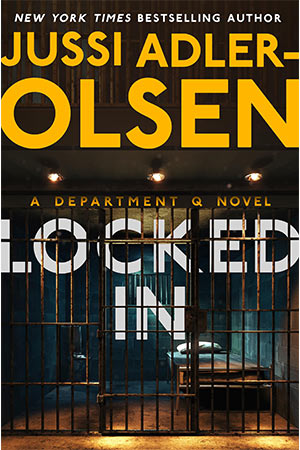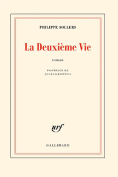Locked In by Jussi Adler-Olsen

New York. Dutton. 2024. 512 pages.
Hailed by the critics as the “king of Danish crime fiction,” a title he despises, Jussi Adler-Olsen earned an international reputation through his most notable creation so far, the Department Q series of crime novels. The saga consists of ten books and covers a time span of seventeen years (2007–24). Respected Danish directors such as Mikkel Nørgaard, Hans Petter Moland, and Christoffer Boe have chosen to adapt the author’s work for the silver screen, testifying to the immense popularity of the series both in Adler-Olsen’s home country and the rest of the world.
The protagonist in Adler-Olsen’s fictional universe is Carl Mørck, a middle-aged, disillusioned detective whose personal struggles are slowly divulged to readers. Carl is the head of the department that deals with the so-called cold cases, investigations that remain unsolved for many years collecting dust in the shelves of the Copenhagen Police headquarters. However, Carl’s lead role can’t overshadow the charisma of the other members of his close-knit group of dogged detectives as Adler-Olsen showcases his singular skills of characterization in every single book, beginning with the first installment, The Keeper of Lost Causes (2007). Assad and Rose will both stick in your mind due to their idiosyncratic behavior that often involves a conspicuous humorous angle, in stark contrast to the bleakness of the plotlines.
The Department Q novels follow the same recipe each time with Carl’s team taking on impossible investigations into crimes that have been long buried in the past, and from then on we follow the procedure executed by the members of the team. Sometimes, as often happens with police procedurals, the process feels dreary, and the reader craves some action and intrigue. Adler-Olsen is shrewd enough to avoid this pitfall as he opts for multiple-perspective narratives with a timeline that incessantly jumps back and forth, thus keeping us alert and vigilant throughout, waiting to see the unforeseen direction that each case will eventually take. Some of the plots revolve around one of the protagonists: Victim 2117 (Assad), The Scarred Woman (Rose), and so on.
Locked In is the tenth novel and the concluding segment, signifying the end of an era for the hardboiled fans of Nordic crime fiction as they have to say goodbye to some of the most quirky and remarkable protagonists ever encountered in international crime fiction. The beginning of the novel finds Carl incarcerated in the notorious Vestre prison, one of the toughest correctional facilities in Scandinavia. He is charged with a string of major crimes, including possession of massive quantities of illegal substances and murder. The plot has direct references to the case with which the Department Q saga commenced nearly two decades earlier. It was an incident that took place in a seedy neighborhood of Copenhagen and resulted in the murder of one of Carl’s most trusted colleagues and the incapacitation of another. Even though Carl walked away physically unscathed, the emotional strain tormented him for years to come, and this motif recurs in all the novels, partly explaining Carl’s inability to connect with others and forge meaningful relationships. Now, the nightmare returns to take out Carl for good as there is little hope that he will eventually manage to dodge major prison time. Assad, Rose, and Gordon will have to conduct their own secret investigation, defying the orders of their superiors to help their boss. Carl’s wife, Mona, will also prove to be an asset in critical moments.
Even though this is not the best book in the series, it packs a potent emotional punch mainly because the readers know that they will not have a chance to relish another Department Q novel in the future. The story is chiefly divided into two separate subplots that unfurl at the same time in the present. The first and most titillating one follows Carl’s struggles at Vestre and contains all the requisites that make a solid prison drama shine on the page or screen. The second one concerns the painstaking investigation conducted by Department Q, which evolves in a rather slow tempo but without the story losing its plausibility. After all, it is a tedious route that the police follow to arrest criminals, so there is no harm if an author wants to depict that credibly. Adler-Olsen must have been in touch with several police officers who instructed him regarding how a criminal inquiry is managed by the authorities. The finale feels optimistic and forces us to forget Carl’s torment in prison while hoping for the best in his future life with his wife and young daughter.
Being the son of a clinical psychiatrist, Adler-Olsen encountered society’s rejects and pariahs from an early age. This experience proved to be the catalyst for his writing in terms of characterization and the crafting of disturbing stories that cauterize abuse of power and injustice in all forms. While it is certainly sad that we won’t be seeing Carl and his beloved sidekicks ever again, the completion of the saga feels like an achievement for both Adler-Olsen and the reader who spent many hours occupying the author’s mind and heart. This is an unmissable title for all true aficionados of Nordic crime fiction.
Dimitris Passas
Athens

































